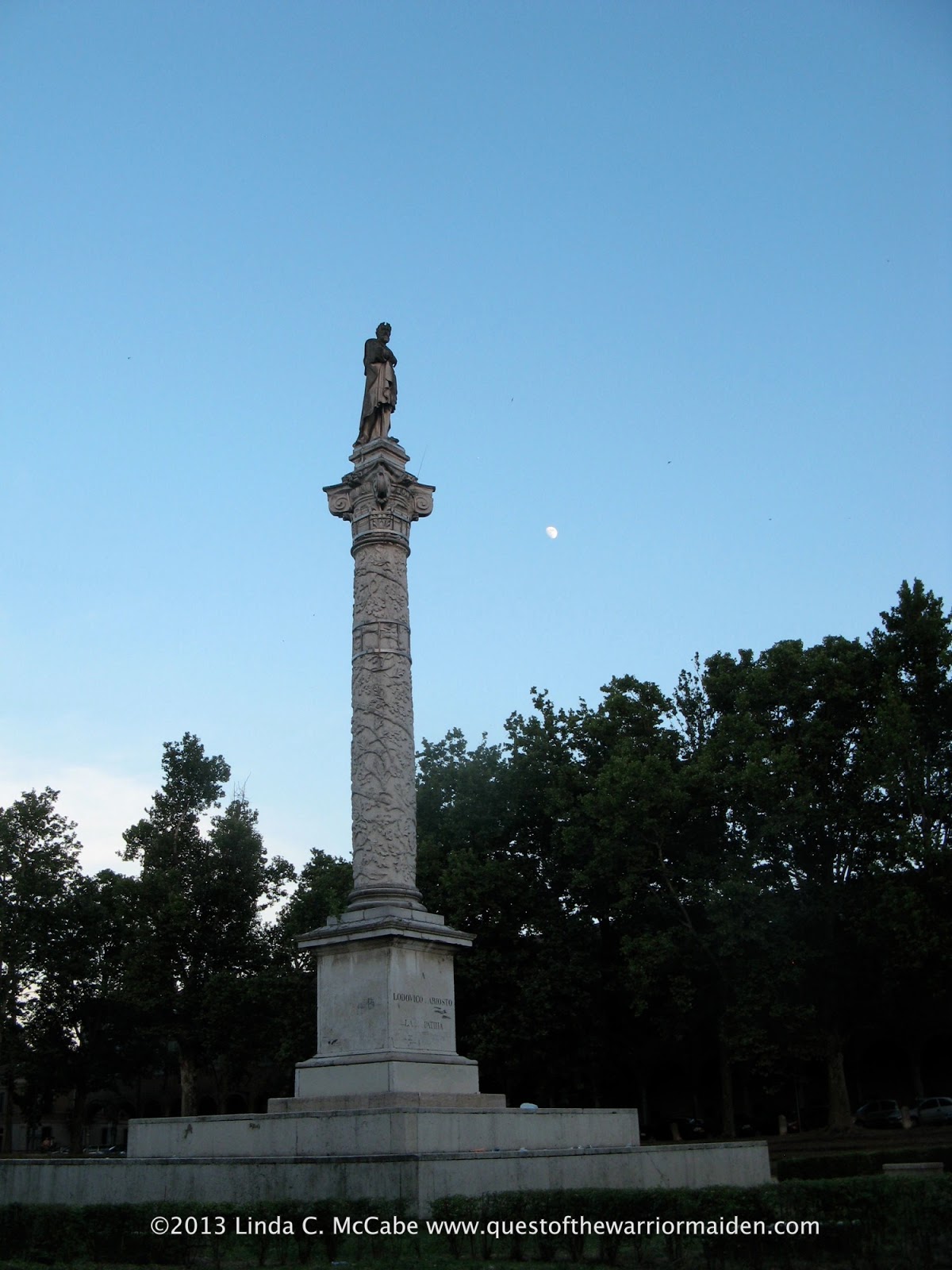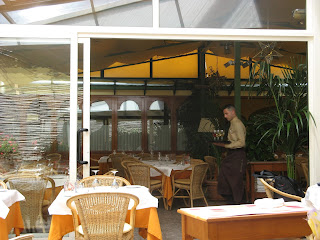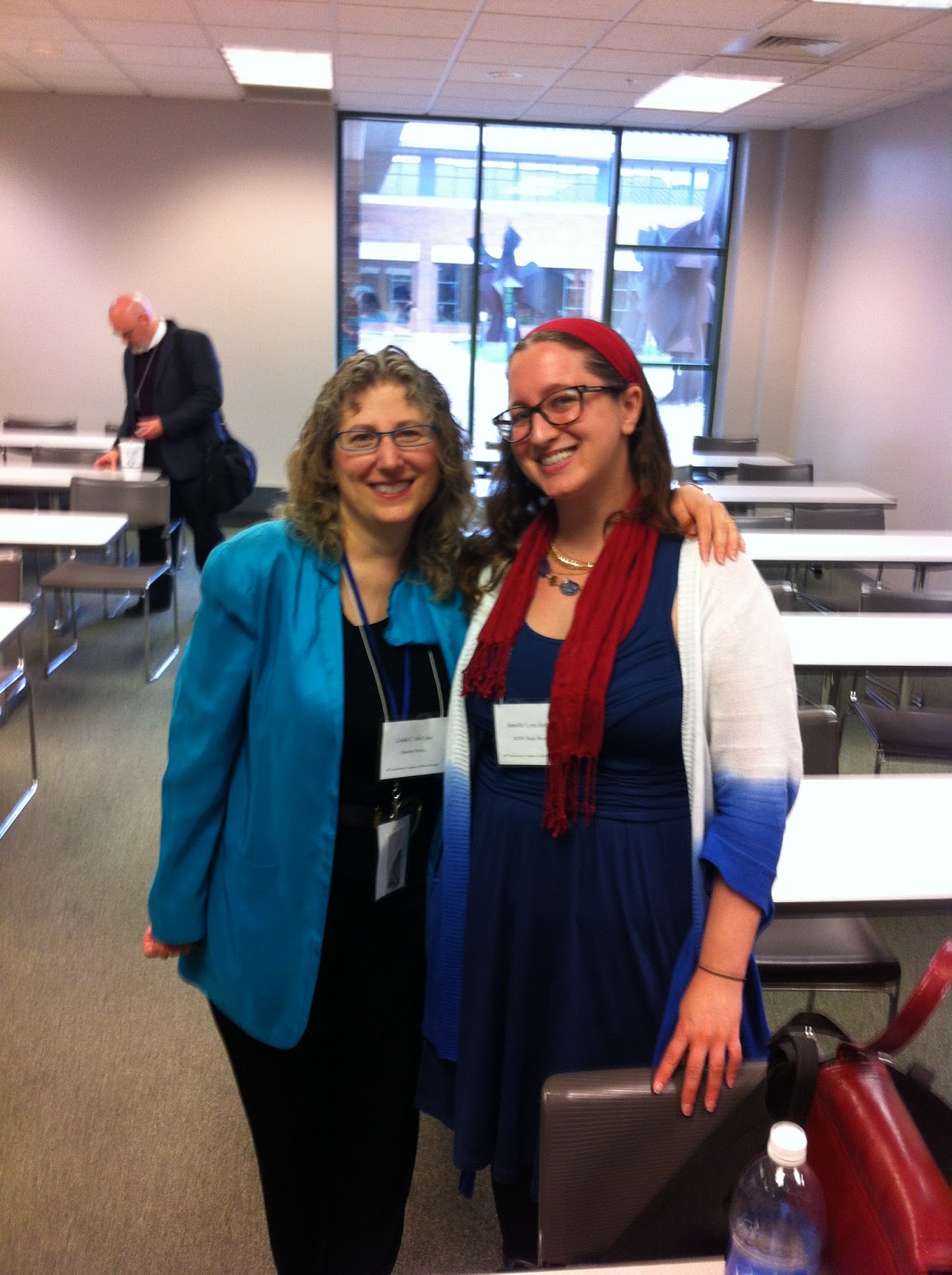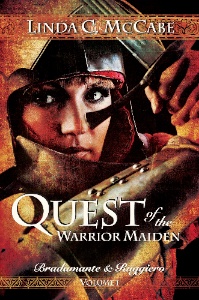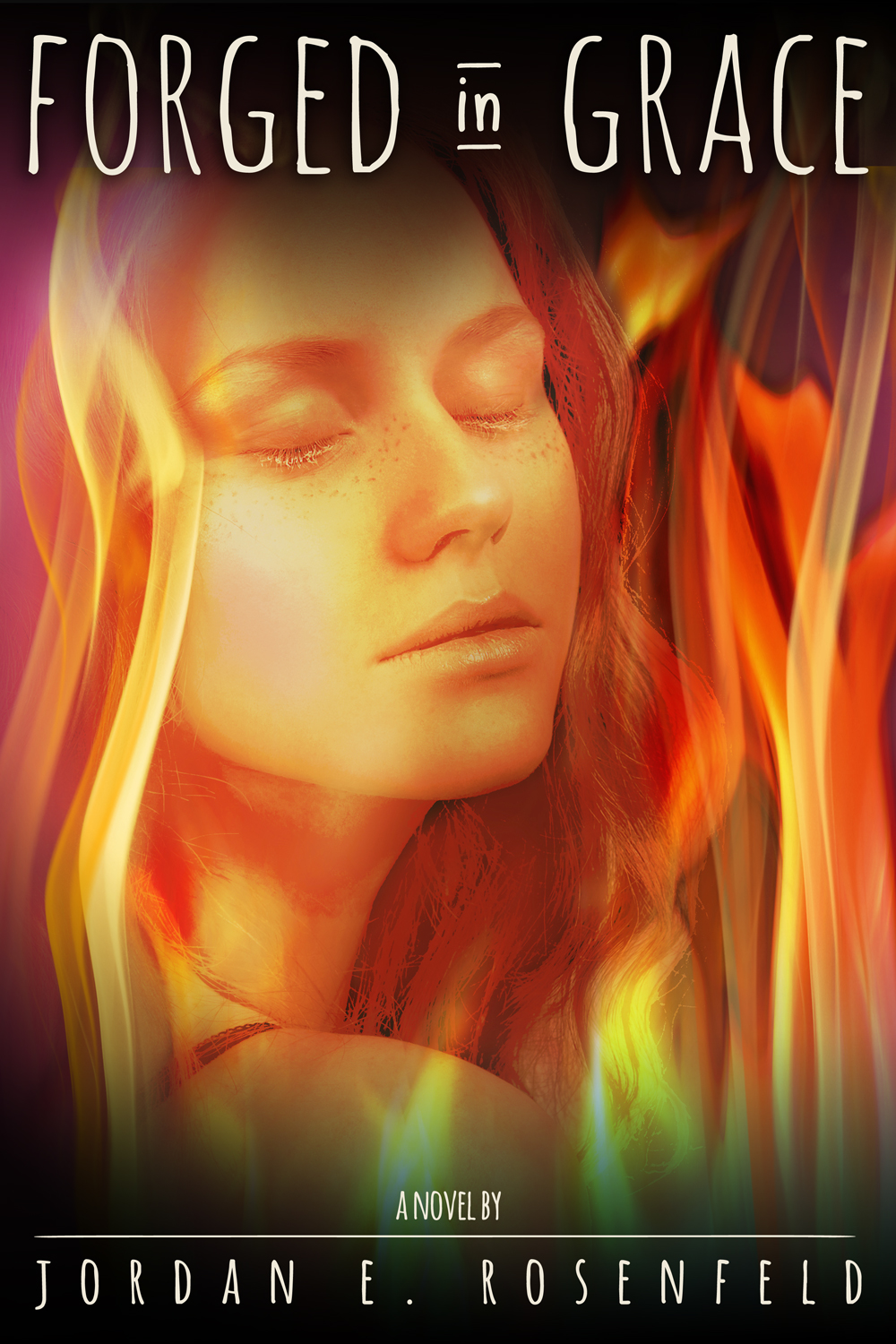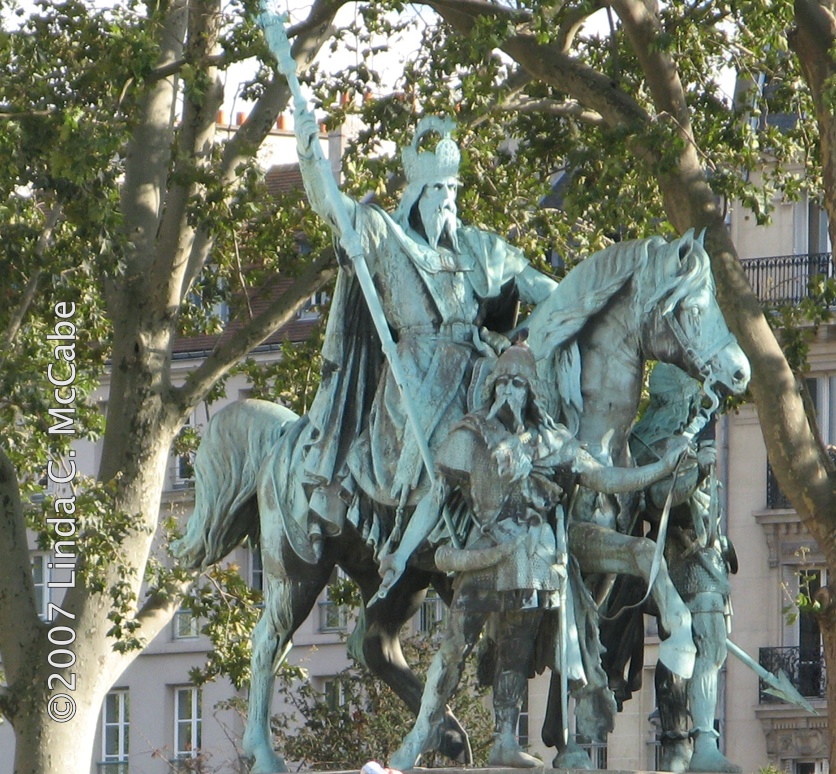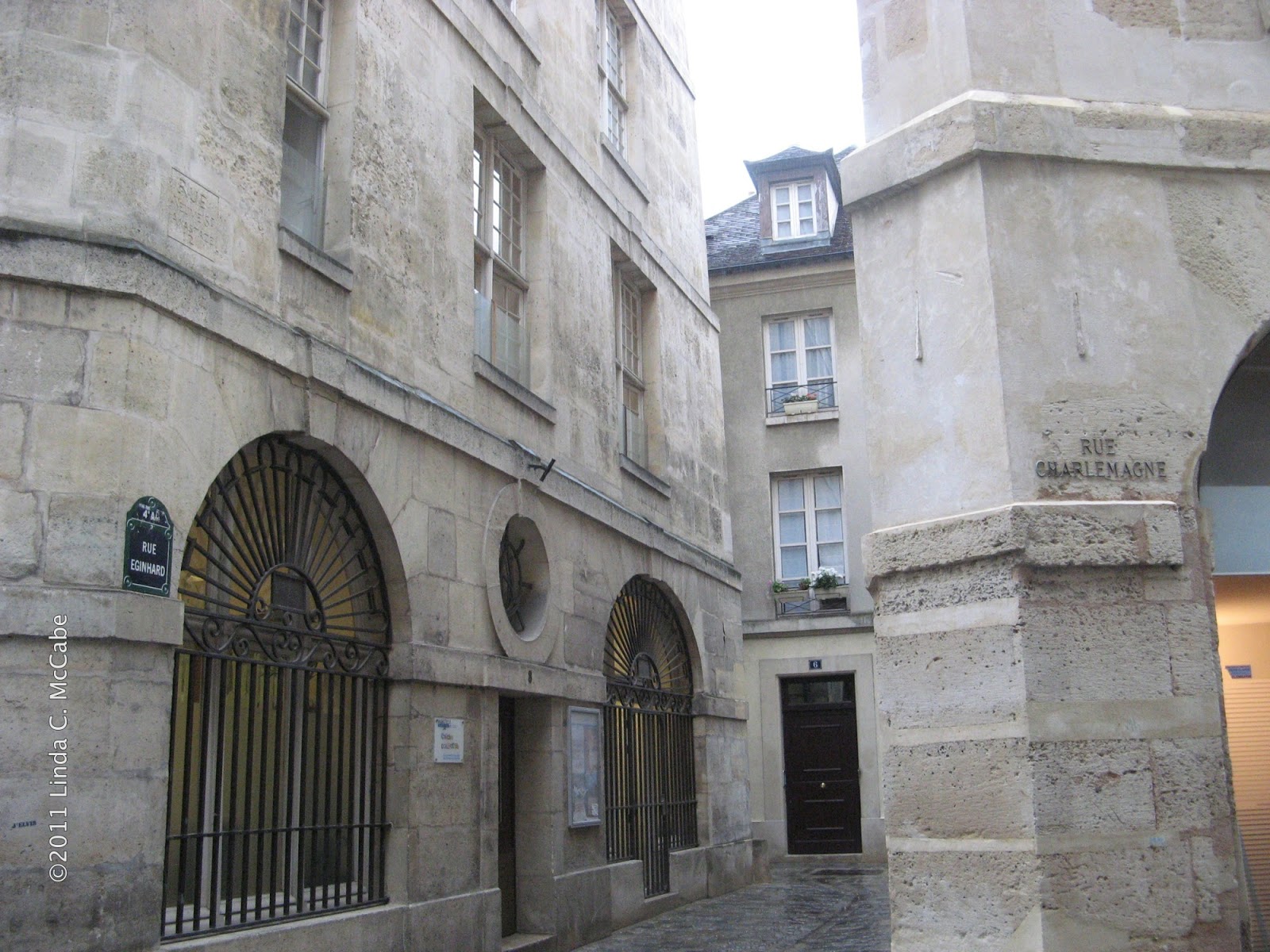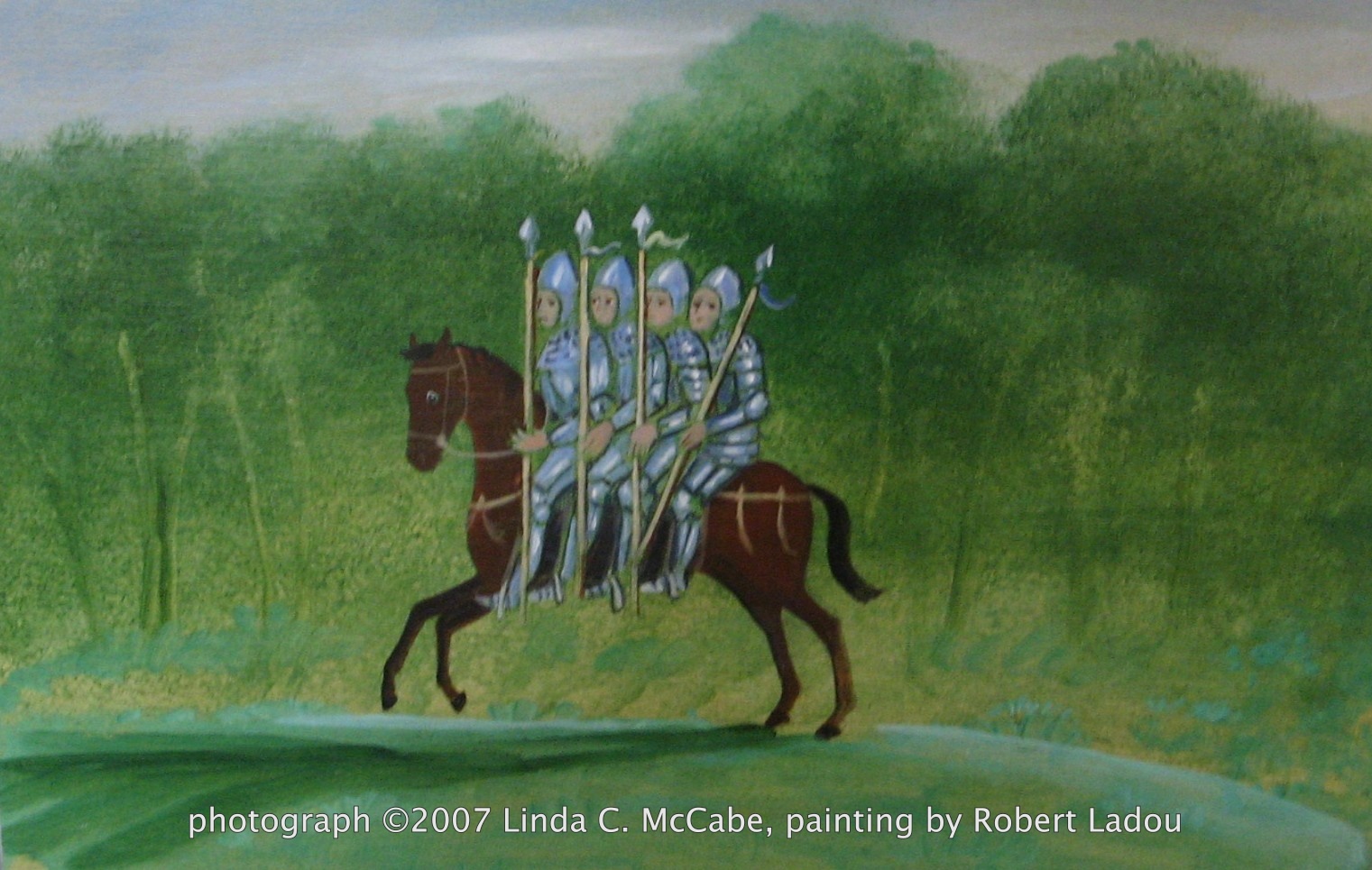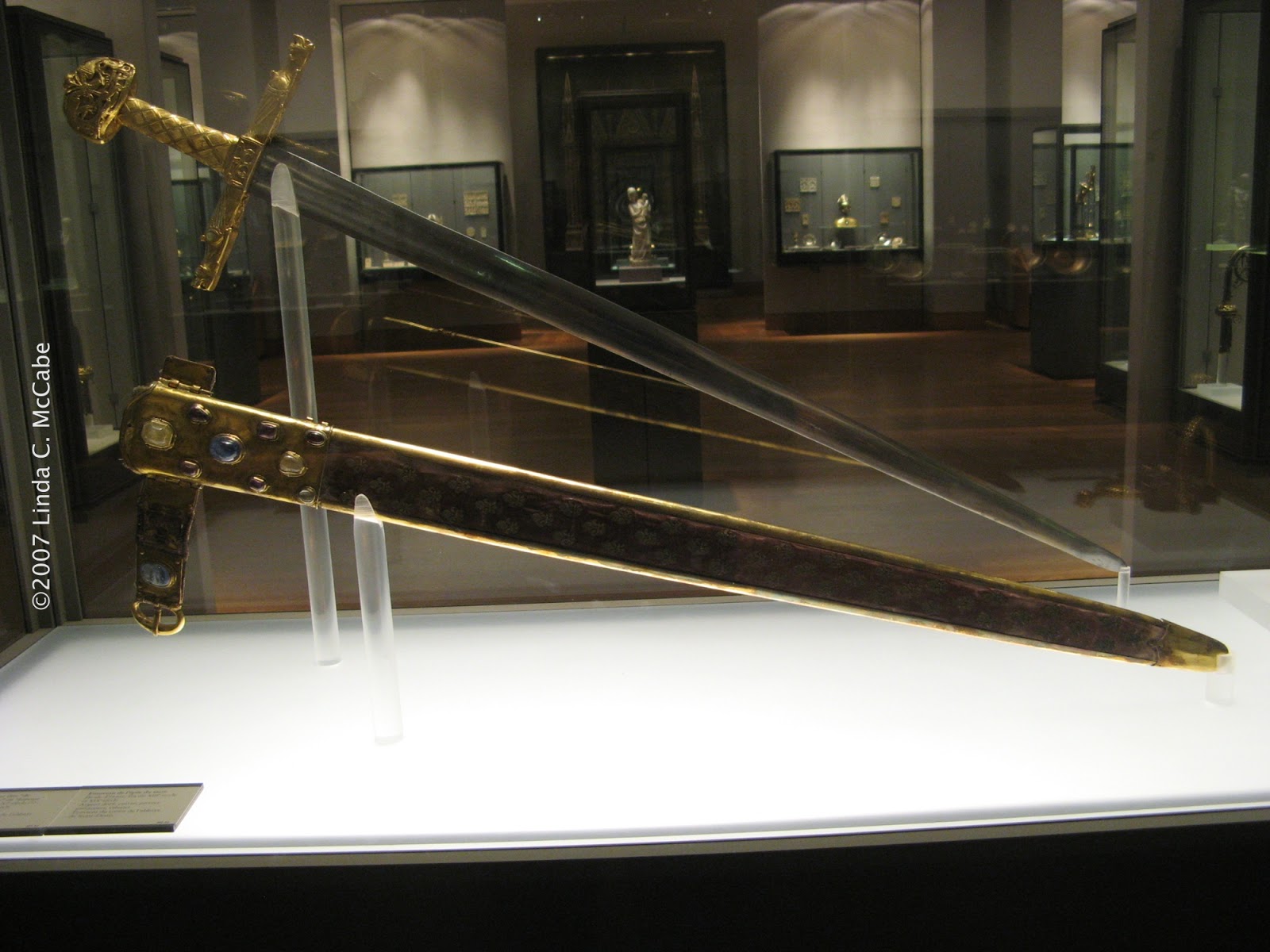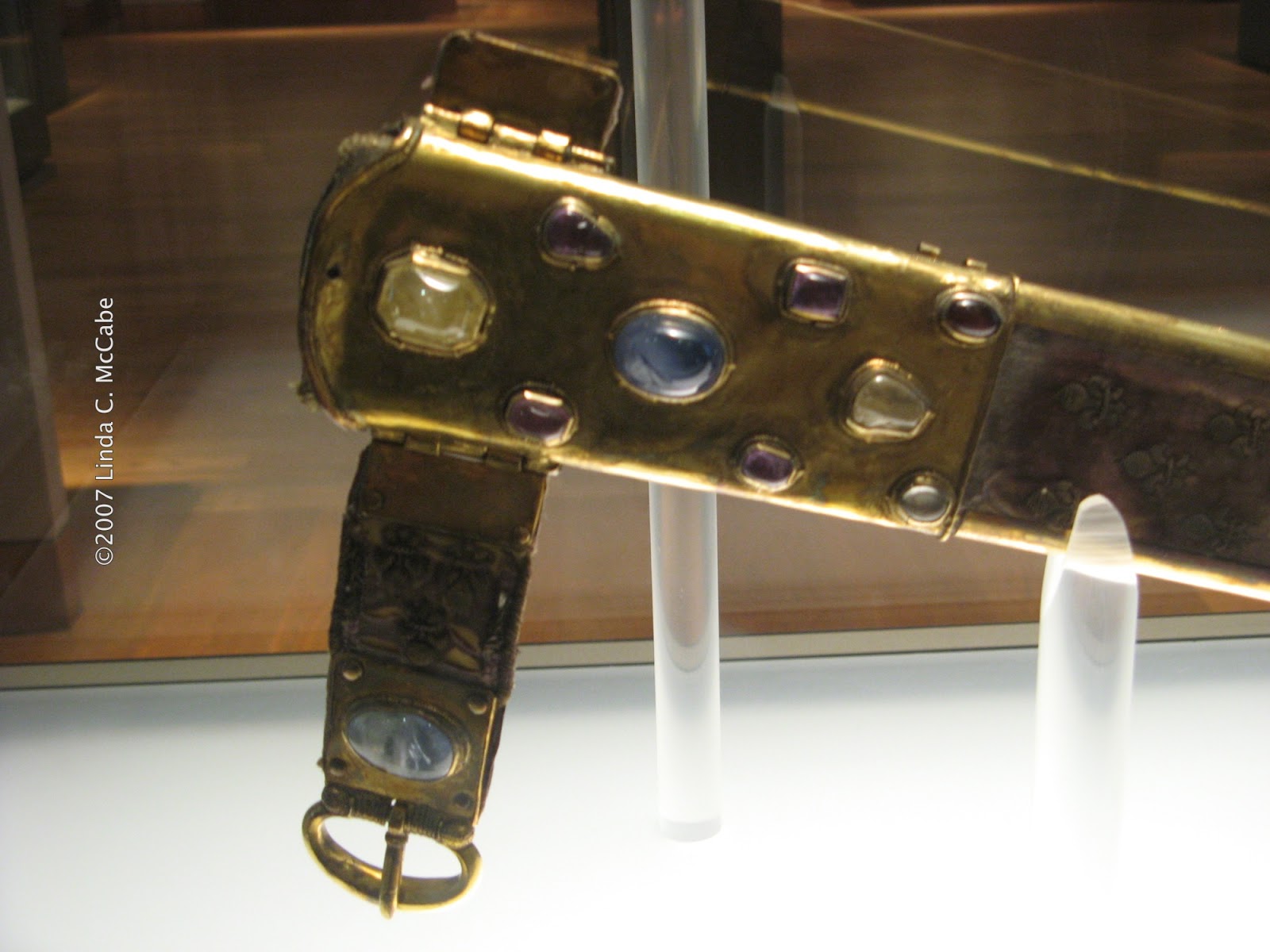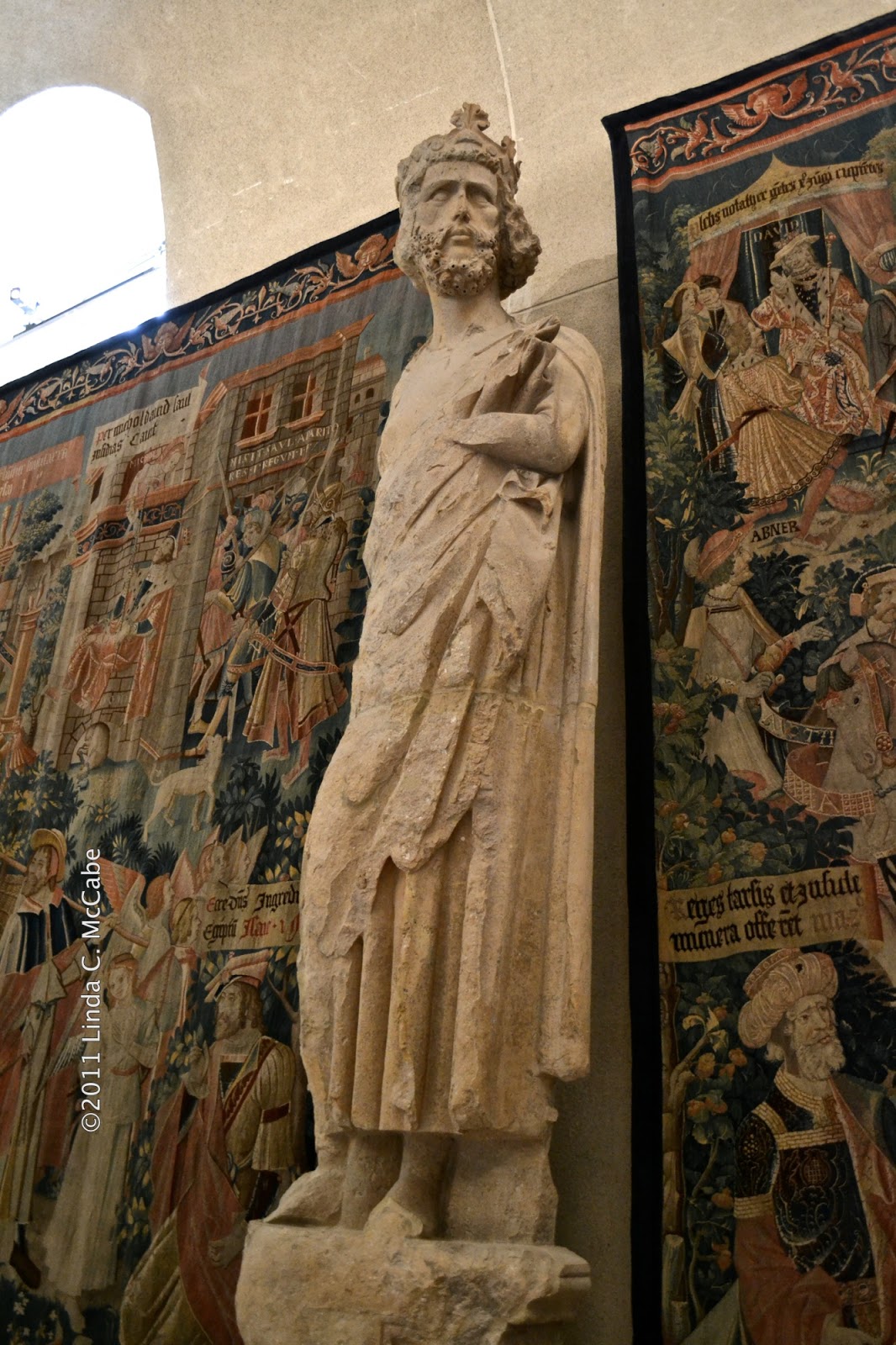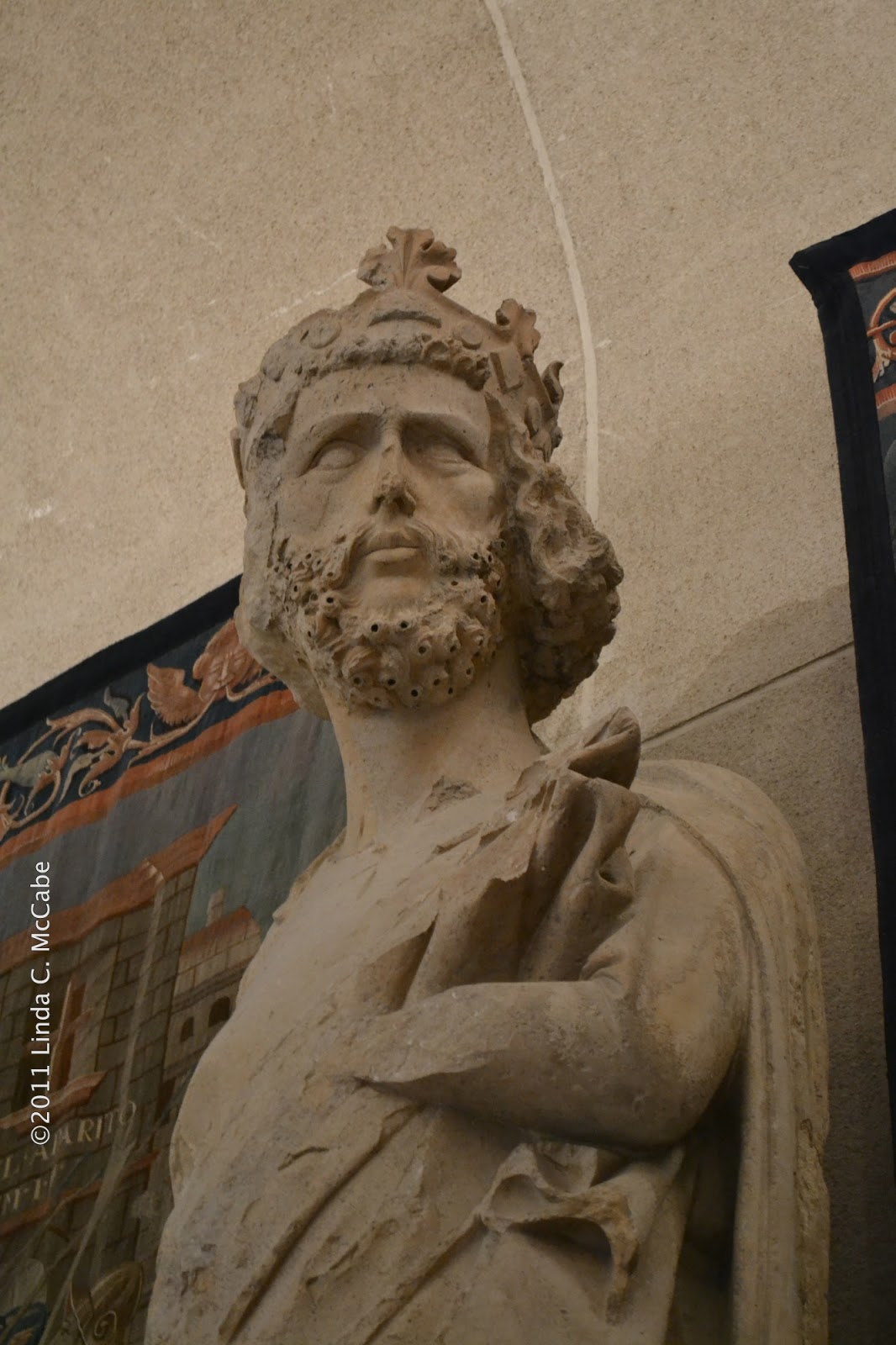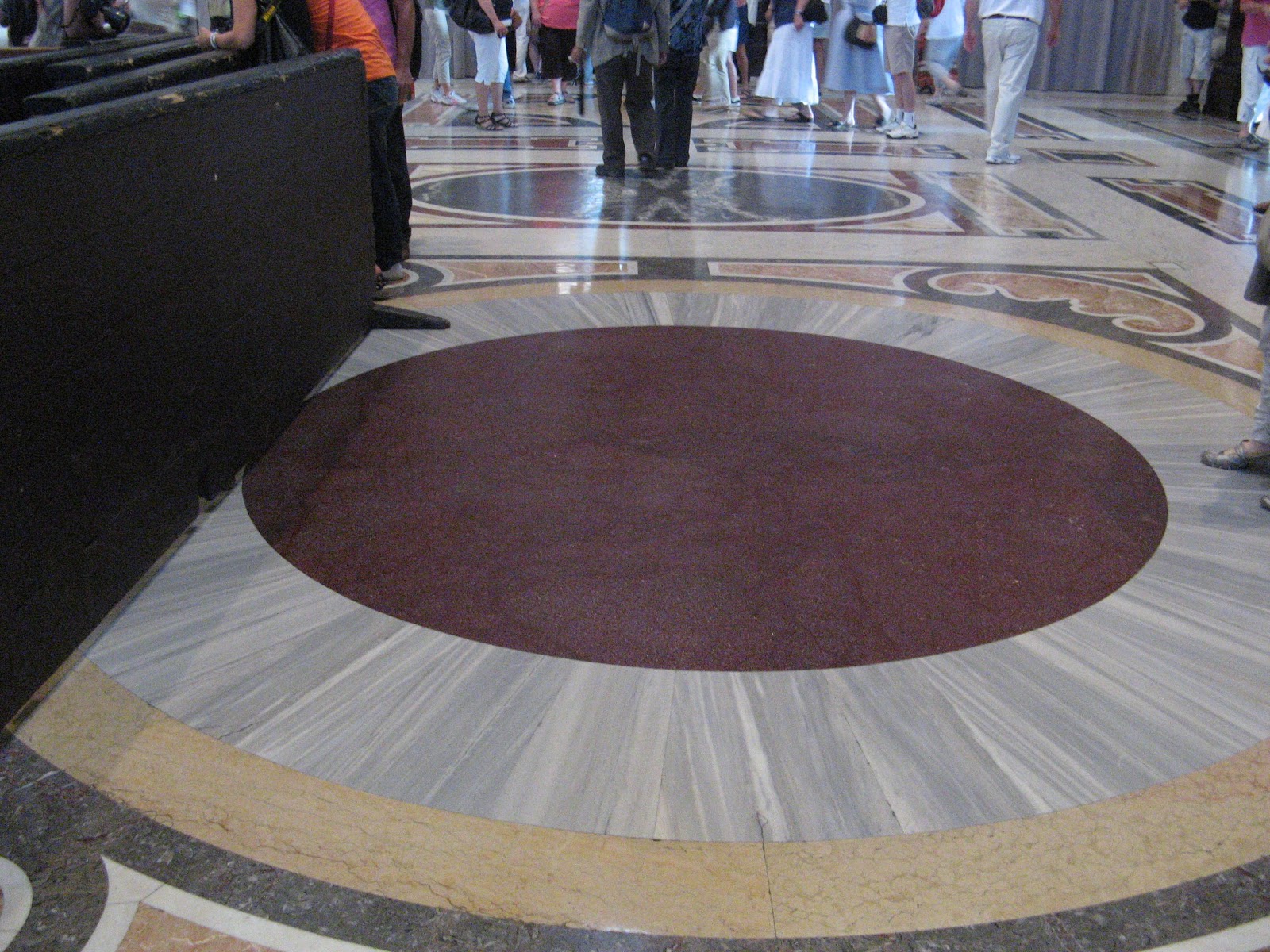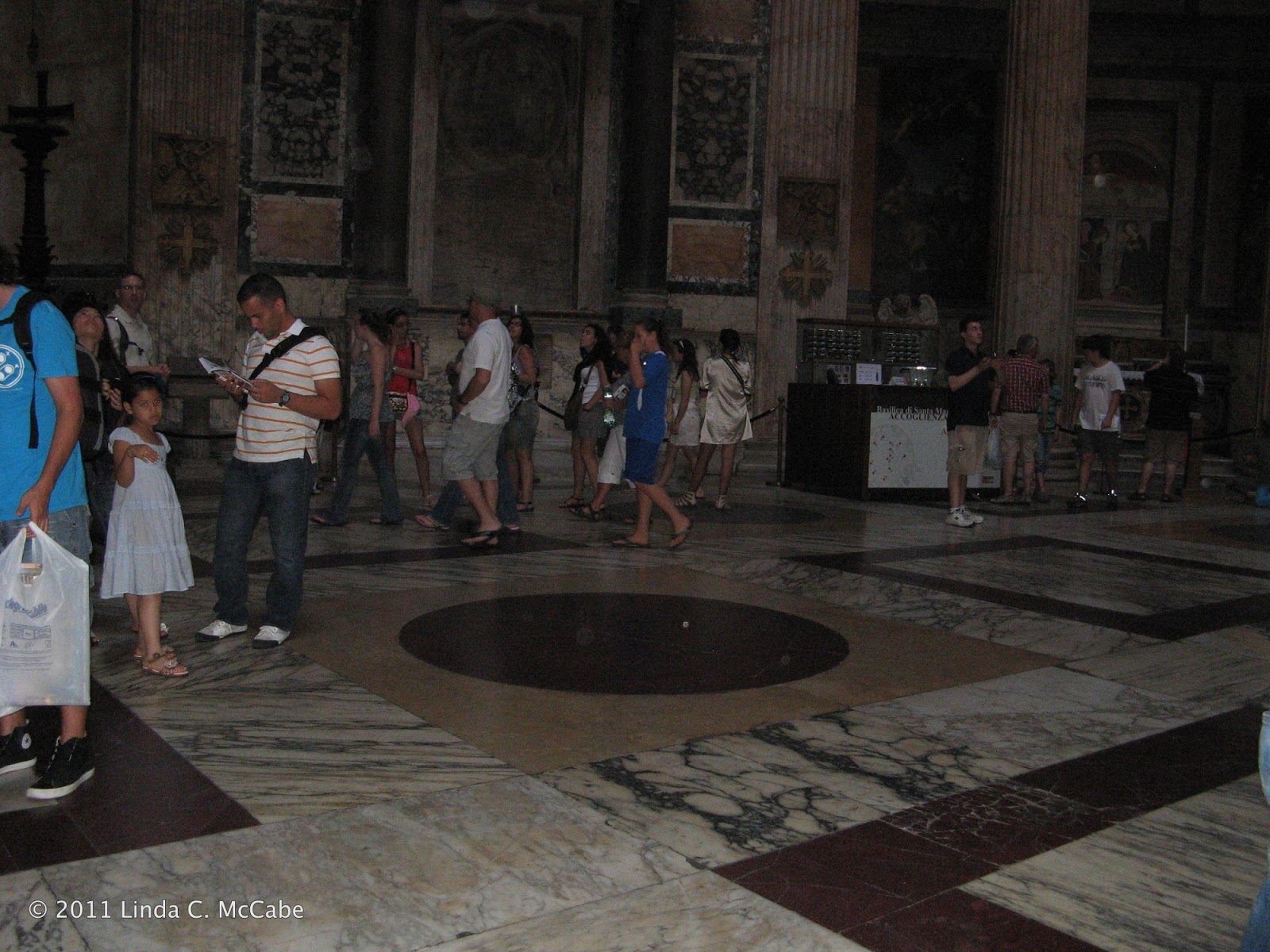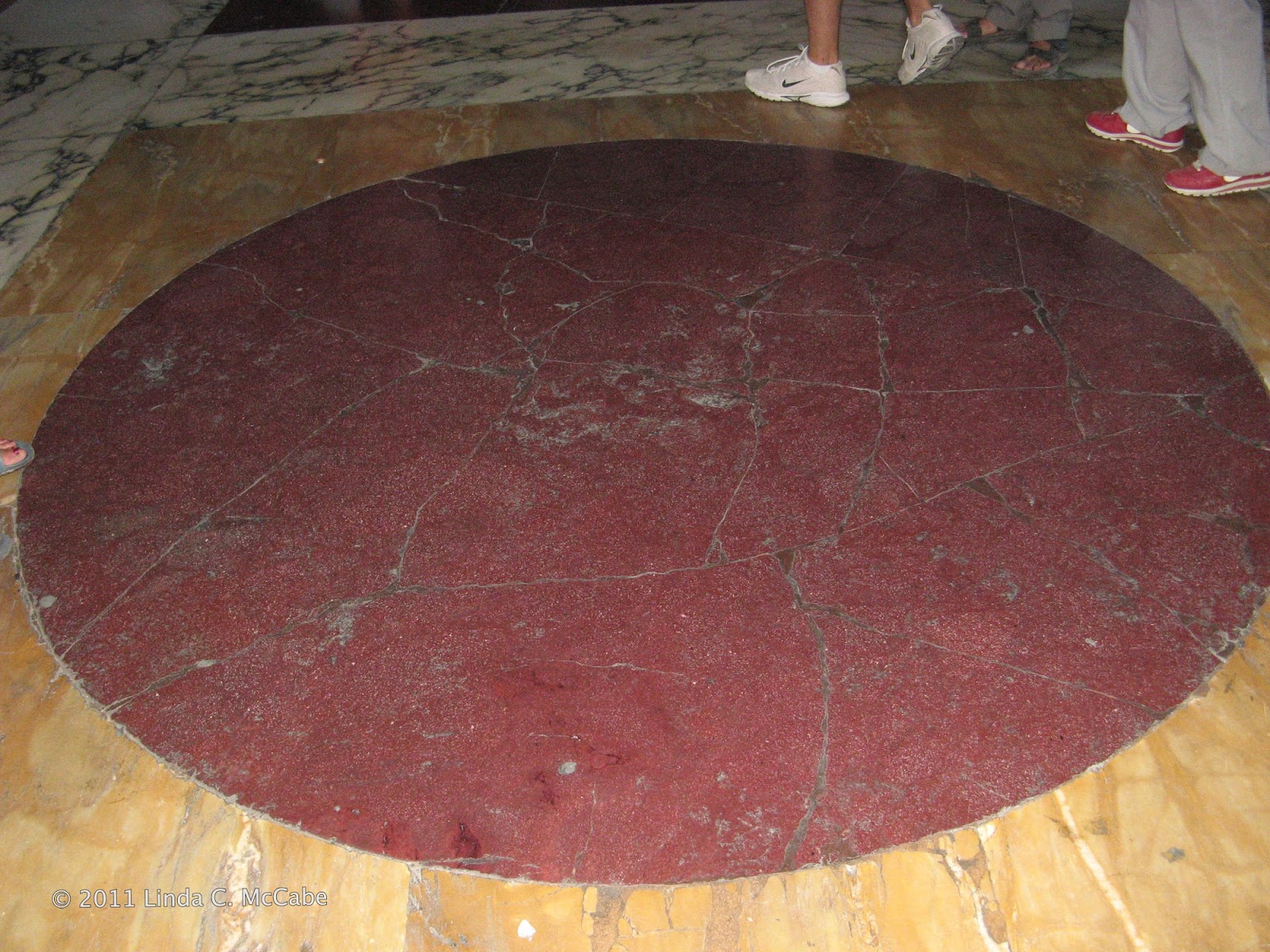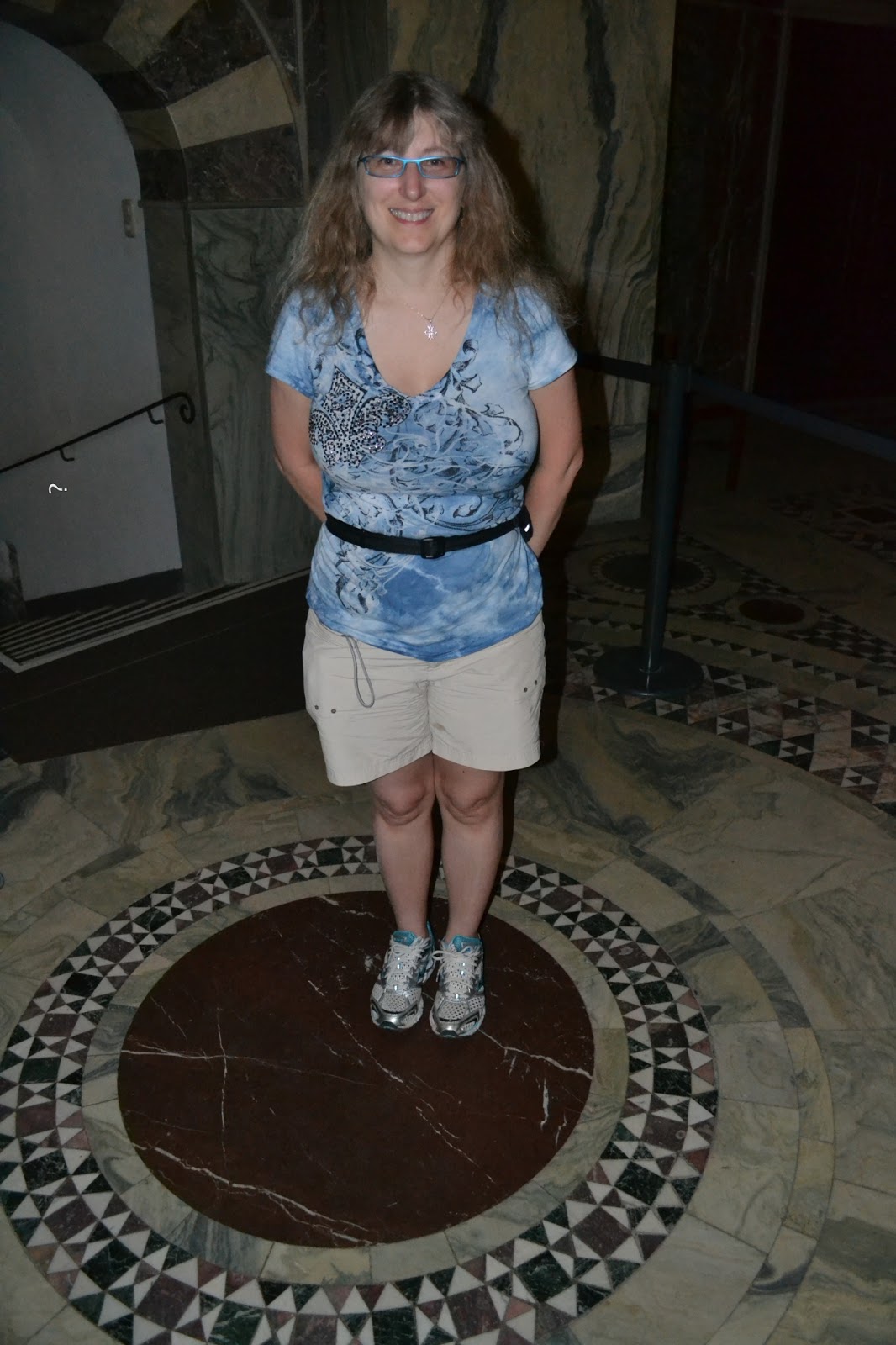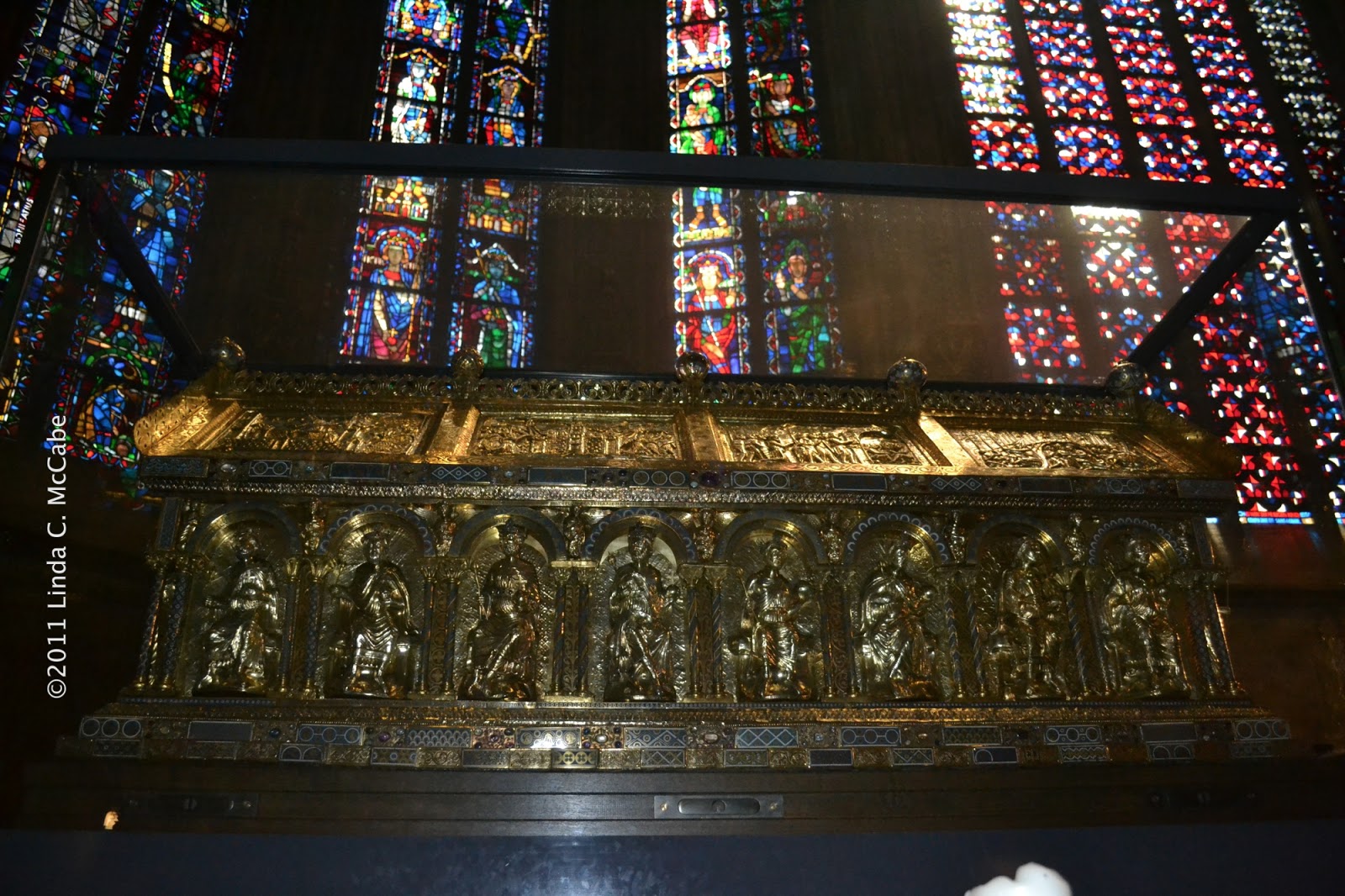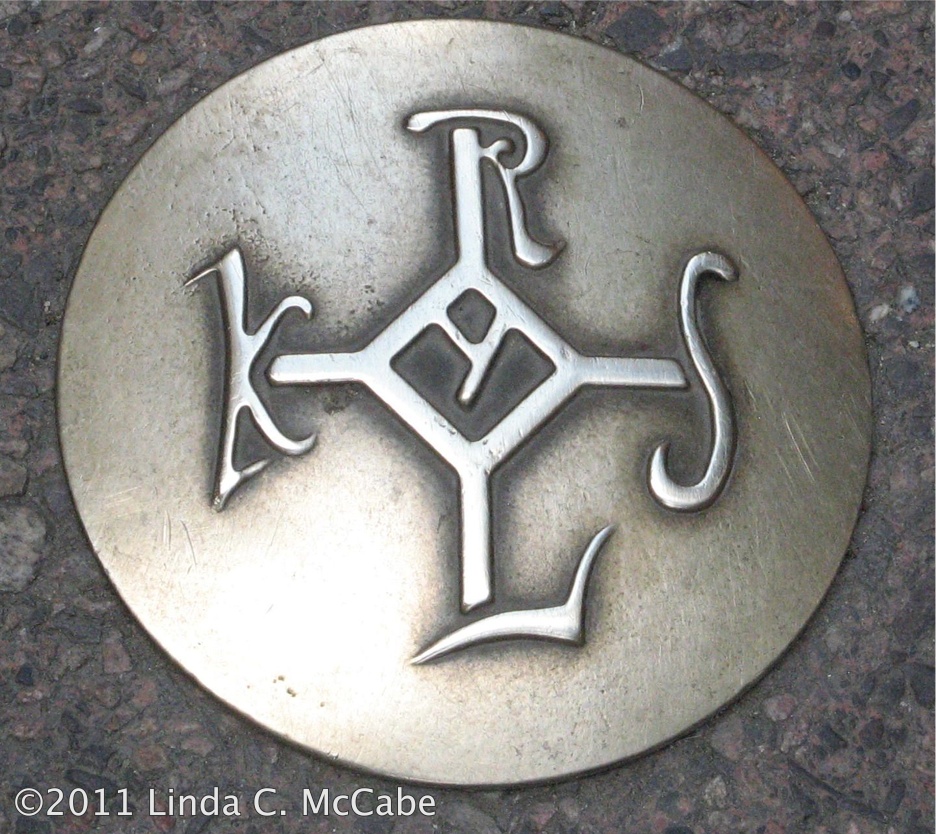 |
| Outside the cathedral in Ferrara, Italy |
I wanted to see as many sites associated with Ariosto, Matteo Maria Boiardo and their patrons - the noble house of d'Este - as was possible for the limited time I had available.
I had spent countless hours planning the sites to see, but alas, things do not always work out the way you hope.
I discovered there were apartments for rent in a building once owned by Ariosto. I reserved a room for three nights. My plan was to arrive in Ferrara after a day of sightseeing in Firenze, spend the next day exploring Ferrara, and the following day we would have a day trip to Ravenna.
I had wanted to sleep in a home that once belonged to Ariosto and hope I would become inspired by the experience.
-->
 |
| Historical marker for the current Cavallini-Sgarbi House |
 | |
| The Cavallini-Sgarbi House showing a covered walkway. |
I was looking forward to that experience, but then Fate upended my plans.
Ferrara suffered from a large earthquake in 2012, and as luck would have it - the historical building I had reservations for wound up having maintenance scheduled to be performed during the time we were supposed to stay there.
These things happen. At least I learned about the conflict with adequate advance notice to secure a different place for us to stay. I am also grateful it was not a case of being At The Wrong Place At the Wrong Time and have something Truly Bad Happen, like the devastating earthquake that necessitated the seismic retrofitting. Instead, it was simply a disappointment and inconvenience for my family.
Here is an example of damage from the earthquake and the subsequent tremors has had in Ferrara. The picture is of a ceiling fresco in the Castello Estense.
I was surprised the first time I noticed tape on the ceiling, but then quickly understood why it was there. We asked a docent about the tape and our suspicions were confirmed as to its purpose. It is to prevent further cracking until restoration can be performed.
There was a lot of tape used throughout the castle on artwork. It serves as a sober reminder of how historical items are vulnerable to the power of Nature. They are not just pieces of art created centuries ago, but are precious items that need to be preserved for future generations.
We arrived in Ferrara on a Wednesday evening, but several hours later than we expected. Our connecting train in Bologna was late. Then again, most trains were late that day. One woman on the platform informed us that earlier in the day someone had thrown themselves upon a set of train tracks and it delayed all the trains in the region for at least an hour.
Once at the Ferrara train station, we had a taxi bring us to our B&B (bed and breakfast). It would have been a half hour walk, and dragging our luggage that far after being exhausted, and really hungry was not worth saving a few euros. Taking a taxi was a necessity and not a luxury at that point in time.
By the time we got to our room we were tired, our feet were sore from our sightseeing in Firenze and we were really hungry. The weather in Italy had been HOT for days and it added to our desire to find dinner, and go to sleep early in our air conditioned rooms.
My husband and son at that point in time were not all that interested in noticing the charms of Ferrara, but I came became revived once we left our baggage behind and started exploring the city. One aspect that I love about Ferrara is that it is a bicycle friendly city. There are cars and some Vespas, but bicycles seem to be the biggest method of transportation used by the people. They are not fine racing bikes, but instead generally old beat up bicycles with baskets on their front handle bars. They are utilitarian and get their riders from place to place over the cobblestone roads.
Rome has a frenetic energy about it which led me to the conclusion that traffic there is a blood sport. Crossing a busy street in Rome you must be wary. That sense of self-preservation extends to walking in the side streets as the drivers of cars and Vespas zoom past you with little regard to your safety. There were several occasions when I found myself hugging the walls in the back streets to avoid being hit by cars, scooters or motorcycles. Ferrara was a pleasant change of pace for me and I began to relax and appreciate the atmosphere of this historic city.
We walked past the Piazza Ariostea and I was enchanted by the sight of a statue of Ariosto and the moon.
Here is a close up of the inscription on the statue.
That night we ate at a local pizza joint. It was "okay, nothing special." At least we were served quickly and it was not expensive. Afterward, we walked back to our B&B and slept soundly.
The next day was my day to explore Ferrara. My teenaged son decided that he just wanted to relax, sleep in and not go exploring. That meant I was free to roam around the city.
My husband and I started the morning by walking down the Corso Porta Mare and passing the Piazza Ariostea again.
I enjoyed walking in the park and gathering spot for locals that was built dedicated in honor of my favorite poet. We continued on the Corso Porta Mare until we came to Corso Ercole I d'Este, named after the patron for both Boiardo and Ariosto.
On that street is the famous building Palazzo dei Diamante. There are thousands of diamond shaped marble bricks covering the outside of this building. The shadows cast by the diamonds change during the day due to angle of the sunlight making the building a large and complex sun dial. It is a spectacular sight, even if it seems a bit disorienting at first.
 |
| An up-close image of the Palazzo dei Diamante and the Renaissance street Corso Ercole I d'Este. |
My husband and I walked down the Corso Ercole I d'Este until we came to the heart of the Renaissance city. I had to make a quick stop to see a Piazza named for another poet who also worked for the noble house of d'Este.
Alas, this piazza was nothing more than a parking lot.
 | |||
| The Piazza Torquato Tasso |
We soon made it to one of the big destinations for me: seeing the castle where the Estes family lived.
It is an impressive sight.
I shall continue my travelogue about Ferrara in another post, lest this
become epic in size similar to the poems which inspire my writing.

